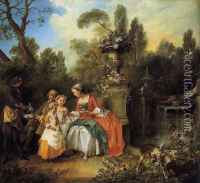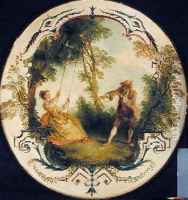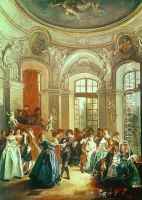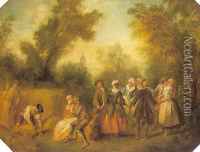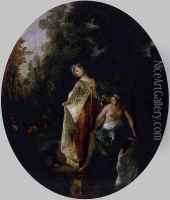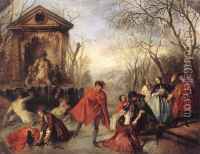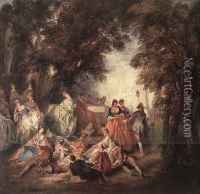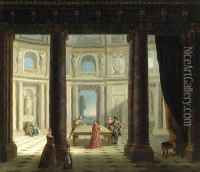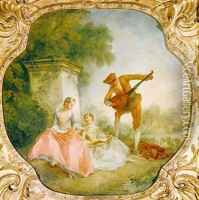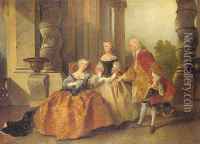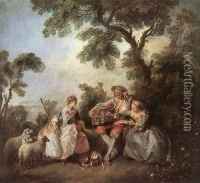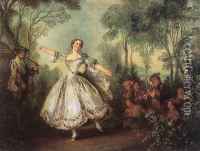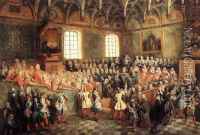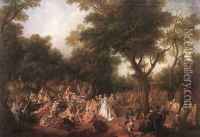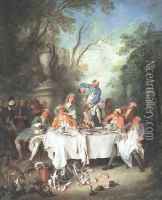Nicolas Lancret Paintings
Nicolas Lancret was a French painter born on January 22, 1690, in Paris. He is widely considered one of the most important painters of the Rococo era, known for his light-hearted and whimsical interpretations of contemporary Parisian life. Lancret began his artistic training under the history painter Pierre d'Ulin but soon became a pupil of Claude Gillot, an artist celebrated for his theatrical paintings and the teacher of another prominent Rococo painter, Antoine Watteau. Lancret's work was profoundly influenced by Watteau, particularly in his use of the fête galante genre – a term coined for Watteau's works that depicted elegantly costumed figures in pastoral settings engaging in amorous play and conversation.
Lancret's career flourished after Watteau's death in 1721, as he became one of the most sought-after painters for the depiction of fêtes galantes. He was admitted to the Royal Academy of Painting and Sculpture in 1719, and later became a full member in 1724 with the presentation of his work 'Spring', which was part of a series of the four seasons, a popular subject among Rococo artists. Lancret's paintings were admired for their vibrant color palette, lively characters, and intricate depiction of textiles and fashion, which captured the essence of the hedonistic lifestyle of the French aristocracy during the reign of Louis XV.
Throughout his career, Lancret received numerous commissions from the French court and wealthy patrons, which allowed him to portray a range of subjects, from mythological scenes to more intimate and casual moments of everyday life. He also produced a number of portraits, although these are less known compared to his genre scenes. Nicolas Lancret's work was celebrated for its charm and vivacity, and he was considered a master of capturing the nuances of social interaction and the pleasures of the era.
Lancret's success, however, was not without its challenges. He faced competition from other artists and experienced fluctuating demand for his work, which led to periods of financial difficulty. Despite these struggles, he continued to paint until his death, leaving behind a legacy that would influence future generations of artists. Nicolas Lancret died on September 14, 1743, in Paris. His works remain highly valued for their contribution to the Rococo movement and for their delightful portrayal of 18th-century French society.
